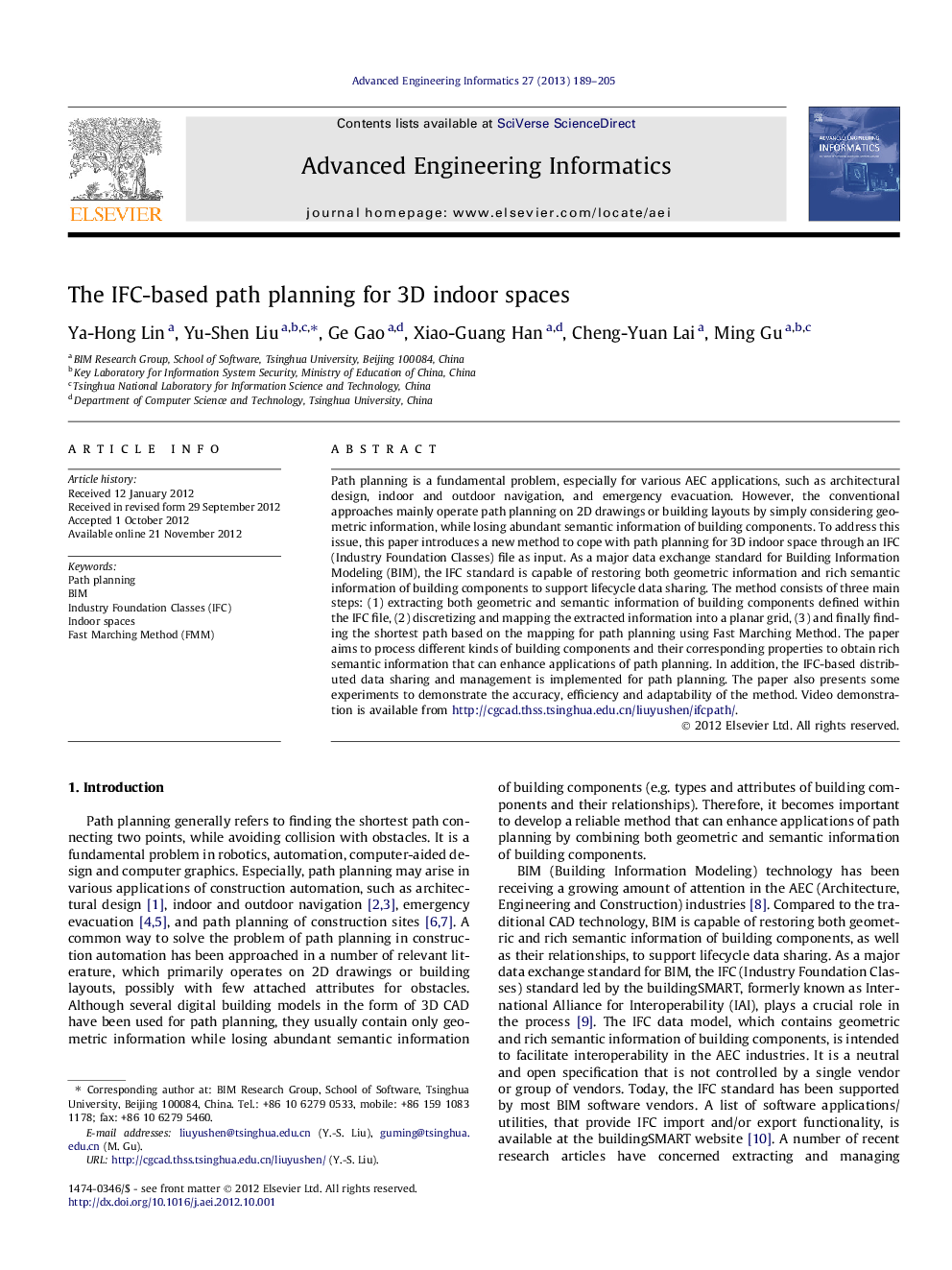| Article ID | Journal | Published Year | Pages | File Type |
|---|---|---|---|---|
| 241990 | Advanced Engineering Informatics | 2013 | 17 Pages |
Path planning is a fundamental problem, especially for various AEC applications, such as architectural design, indoor and outdoor navigation, and emergency evacuation. However, the conventional approaches mainly operate path planning on 2D drawings or building layouts by simply considering geometric information, while losing abundant semantic information of building components. To address this issue, this paper introduces a new method to cope with path planning for 3D indoor space through an IFC (Industry Foundation Classes) file as input. As a major data exchange standard for Building Information Modeling (BIM), the IFC standard is capable of restoring both geometric information and rich semantic information of building components to support lifecycle data sharing. The method consists of three main steps: (1) extracting both geometric and semantic information of building components defined within the IFC file, (2) discretizing and mapping the extracted information into a planar grid, (3) and finally finding the shortest path based on the mapping for path planning using Fast Marching Method. The paper aims to process different kinds of building components and their corresponding properties to obtain rich semantic information that can enhance applications of path planning. In addition, the IFC-based distributed data sharing and management is implemented for path planning. The paper also presents some experiments to demonstrate the accuracy, efficiency and adaptability of the method. Video demonstration is available from http://cgcad.thss.tsinghua.edu.cn/liuyushen/ifcpath/.
Graphical abstractFigure optionsDownload full-size imageDownload as PowerPoint slideHighlights► Present a new IFC-based path planning for 3D indoor spaces. ► Extract and manage both geometric and semantic information. ► Better extensibility to support lifecycle data sharing. ► Demonstrate and enhance applications of path planning.
